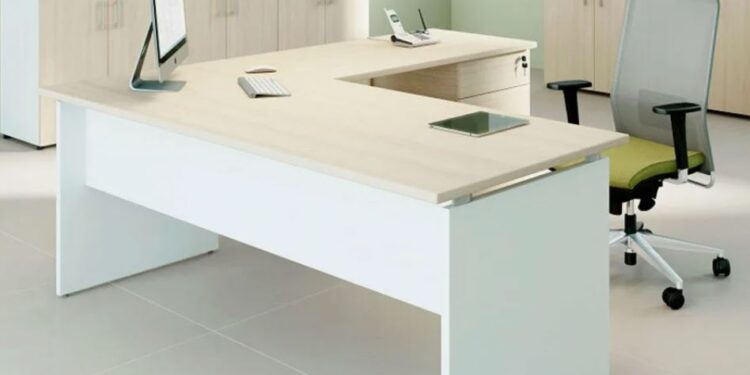In today’s work culture, where many professionals spend the majority of their day seated, the significance of a well-designed office chair cannot be overstated. With back pain and posture-related health issues on the rise, investing in the right Office Chair has become more than just a matter of workplace comfort—it’s a crucial part of maintaining long-term health and sustaining productivity. Whether you’re working from home or in a corporate environment, the office chair you choose has a direct impact on your energy levels, focus, and overall well-being. Prolonged hours of sitting on a poorly designed chair can lead to spinal misalignment, neck strain, and even circulatory issues. As the trend toward remote work continues to grow, many people are now more aware of the importance of ergonomics. Office chairs are no longer simply about aesthetics; they must combine functionality, adjustability, and support to meet the unique needs of each user. From lumbar support and adjustable armrests to breathable materials and tilt mechanisms, an ideal office chair addresses multiple pain points associated with sedentary lifestyles. Employees who are seated comfortably for hours tend to be more focused, less fatigued, and overall more efficient in completing their tasks.
Features to Look for When Buying an Office Chair
Selecting the right office chair involves much more than picking one that looks good. While design and style can complement your workspace, it is the underlying features that determine its true value. One of the first things to consider is ergonomic support. An ergonomic chair is specifically engineered to support the natural curvature of the spine and reduce strain on the lower back. Look for features like lumbar support, adjustable height, and seat depth customization. These elements ensure that users can modify the chair to fit their body type and posture, thereby minimizing discomfort. Another key feature is material. Breathable mesh chairs are popular for their ventilation properties, making them ideal for long hours in warm environments. On the other hand, leather or faux leather chairs provide a premium look and feel, although they might require more maintenance. Additionally, the base and casters should offer stability and smooth mobility. A sturdy five-point base with dual-wheel casters is recommended for easy movement across different surfaces without compromising safety. Finally, check the armrests and recline function. Adjustable armrests help reduce strain on the shoulders and wrists, especially for those who type a lot or use a mouse extensively. A recline or tilt function adds versatility, allowing users to lean back and stretch, promoting circulation and reducing pressure on the spine.
How the Right Office Chair Enhances Workplace Efficiency
It’s well-documented that workplace ergonomics directly affect employee performance. The right office chair not only boosts comfort but also plays a pivotal role in enhancing workplace efficiency. When employees are free from physical discomfort, they’re better able to concentrate on their tasks, meet deadlines, and contribute positively to team dynamics. A well-designed office chair reduces the number of micro-breaks employees take to stretch or adjust their position, leading to improved time management. Moreover, a chair that supports proper posture can decrease the number of sick days taken due to musculoskeletal problems. This ultimately translates into financial savings for employers and increased productivity across departments. Comfortable employees tend to be happier and more engaged in their work, and this morale boost is often reflected in their interactions with clients and colleagues. In contrast, an inadequate office chair can lead to poor posture, reduced energy, and even chronic health conditions. Therefore, companies that prioritize quality office chairs as part of their ergonomic planning often see improved employee retention and satisfaction. Investing in the right office chair is not just about furniture—it’s about creating a productive, healthy, and sustainable work environment.
Common Mistakes to Avoid When Choosing an Office Chair
When shopping for an office chair, many consumers make mistakes that can compromise long-term satisfaction and health. One of the most common errors is choosing style over substance. While it’s tempting to pick a chair based on how well it matches your office decor, neglecting ergonomic features can lead to discomfort and reduced efficiency over time. Another frequent mistake is not testing the chair before purchase. Sitting in a chair for a few seconds in a showroom isn’t enough to gauge its comfort or support during a full workday. Online buyers should look for detailed specifications, verified reviews, and return policies that allow for real-world testing. It’s also important to avoid fixed chairs that lack adjustability. People come in all shapes and sizes, and a one-size-fits-all approach rarely works when it comes to seating. Adjustable height, tilt tension, and lumbar support are must-have features for adapting to your specific needs. Additionally, overlooking the weight capacity of the chair can lead to quick wear and tear or even safety issues. Make sure the chair you choose is built to support your body type and daily usage habits. Ignoring these details might save money in the short term but could lead to costly replacements or health issues in the future. Avoiding these pitfalls ensures that your investment in an office chair yields both immediate comfort and long-term value.
The Future of Office Chairs: Trends and Innovations
As technology continues to evolve, so too does office furniture, especially in the case of the modern office chair. The future of seating solutions is increasingly leaning toward smart ergonomics and eco-conscious design. Smart office chairs equipped with posture sensors and app connectivity are already making their way into the market. These chairs can monitor sitting time, suggest posture corrections, and even remind users to take breaks. The rise of sit-stand desk compatibility also means that chairs need to be more adaptable and lightweight, with easy height adjustments and quick mobility features. Sustainability is another growing trend, with many office chairs now being made from recycled or biodegradable materials. Brands are embracing eco-friendly production methods without compromising on durability or comfort. Additionally, the use of 3D printing and modular design is allowing for greater customization and repairability, extending the life of the product. As hybrid and remote work become the norm, people are also seeking chairs that serve multiple functions—transforming from work mode to relaxation with ease. The demand for compact, foldable, and minimalist chairs is also on the rise, especially in urban home offices where space is limited. All these innovations point to a future where office chairs are more than just a seat—they are tools for health, productivity, and sustainable living.
Conclusion: Why Investing in the Right Office Chair Matters
Choosing the right office chair is a decision that affects much more than your workspace—it influences your health, productivity, and overall work experience. Whether you’re outfitting a corporate office or a home workstation, the importance of ergonomics, adjustability, and design should never be overlooked. Investing in a high-quality office chair can reduce fatigue, improve posture, and contribute to a more focused and efficient workday. It’s not just about sitting—it’s about supporting your body and mind for long-term success. For those seeking the ideal balance of style, comfort, and functionality, the brand Office Chair offers a thoughtful range of solutions tailored to meet the needs of today’s professionals. Make the right choice, and your back—and your career—will thank you.















